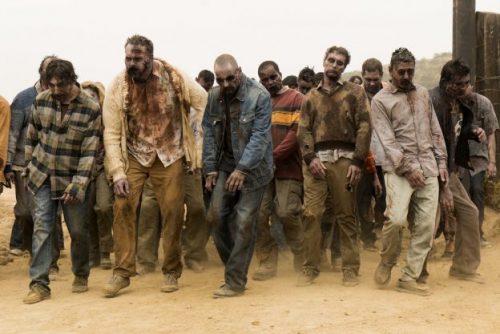From postPerspective:
The action of AMC’s zombie-infused Fear the Walking Dead this season is set in a brittle, drought-plagued environment, which becomes progressively more parched as the story unfolds. So when production was about to commence, the show’s principals were concerned that the normally-arid shoot locations in Mexico had undergone record rainfall and were suffused with verdant vegetation as far as the eye could see.
Pankaj Bajpai of Encore, who has color graded the series from the start, and the two new cinematographers hired for this season — Christopher LaVasseur and Scott Peck — conferred early on about how best to handle this surprising development.

Pankaj Bajpai
It wouldn’t have been practical to move locations or try to “dress” the scenes to look as described on the page, nor would the budget allow for addressing the issue through VFX. Bajpai, who, in addition to his colorist work also oversees new workflows for Encore, realized that although he could produce the desired effect in his FilmLight Baselight toolset through multiple keys and windows, that too would be less than practical.
Instead, he proposed using a technique that’s far from standard operating procedure for a series. “We got ‘under the hood’ of the Baselight,” he says, “and set up color suppression matrices,” which essentially use mathematical equations to define the degree to which each of the primary colors — red, green and blue — can be represented in an image. The technique, he explains, “allows you to be much more specific about suppressing certain hues without affecting everything else as much as you would by keying a color or manipulating saturation.”

Once designed, these restrictions on the green within the imagery could be dialed up or down, primarily affecting just the colors in the foliage that the filmmakers wanted to re-define, without collateral damage to skin tones and other elements that they didn’t want effects. “I knew that the cinematographers could shoot in the location and we could alter the environment as necessary in the grade,” Bajpai says. He showed the DPs how effective the technique was, and they quickly got on board. Peck, who was able to sit in on the grading for the first episode, recalls, “One of the things I was concerned with was this whole question about the green [foliage] because I knew in the story as the season progresses, water becomes less available. So this idea of changing the greens had to be a gradual process up to around episode nine. There was still a lot of discussion about how we are going to do this. But I knew just working with Pankaj at Encore for a day, that we could do it in the color grade.”
Of course, there was more to work out between Bajpai and the cinematographers, who’d been charged by the producers with taking the look in a somewhat new direction. “Wherever possible I wanted to plan as much with the cinematographers early on so that we’re all working toward a common goal,” he says.
Prior to this season’s start of production, Bajpai and the two DPs developed a shooting LUT to use in conjunction with the specific combination of lenses and the Arri sensors they would use to shoot the season. “Scott recommended using the Hawk T1 prime lenses,” says LaVasseur, “and I suggested going with a fairly low-contrast LUT.” Borrowing language from the photochemical days, he explains, “We wanted to start with a soft image and then ‘print’ really hard,” to yield the show’s edgy, contrasty type of look.
Bajpai calibrated the DPs’ laptops so that they’d be able to get the most out of sample-graded images that he would send them as he started coloring episodes. “We would provide notes when Pankaj had completed a pass,” says LaVasseur, but it was usually just a few very small tweaks I was asking for. We were all working toward the same goal so there weren’t surprises in the way he graded anything.”
“Pankaj had it done very quickly, especially the handling of the green,” Peck adds. “The show needed that look to build to a certain point and then stay there, but the actual locations weren’t cooperative. We were able to just shoot and we all knew what it needed to look like after Pankaj worked on it.”
“Communication is so important,” LaVasseur stresses. “You need to have the DPs, production designer and costume designer working together on the look. You need to know that your colorist is part of the discussion so they’re not taking the images in some other direction than intended. I come from the film days and we would always say, ‘Plan your shoot. Shoot your plan.’ That’s how we approached this season, and I think it paid off.”



